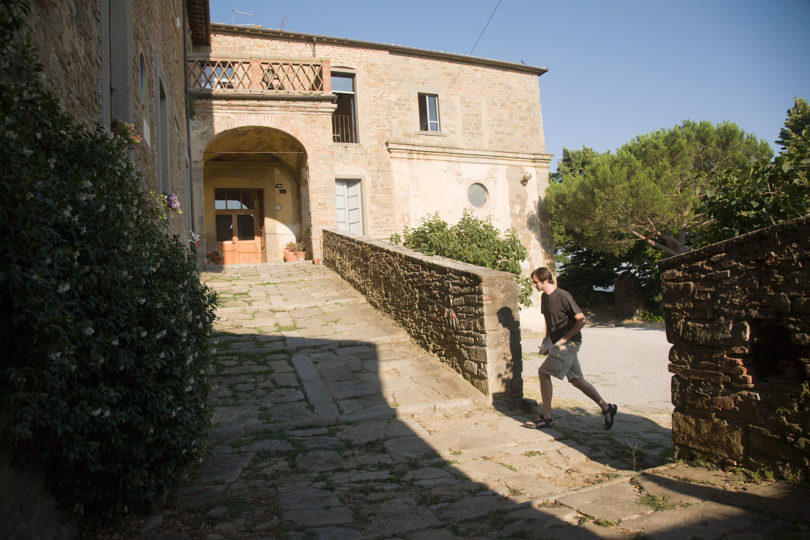Forty-one years ago, UGA art faculty member John Kehoe traveled to Italy looking for a place to locate a new kind of international program. He could have chosen such storied centers of painting and sculpture as Florence, Rome or Venice. Instead, he chose Cortona, and now, more than 8,000 student-participants later, it has become a place of intense, often life-changing education.
“It changed everything for me,” said Rick Johnson, director of the university’s Studies Abroad Program in Cortona since January 2006. “I first went there as a student in 1974 and then returned a number of times to teach. It completely rearranged how I viewed my own art.”
The program is celebrating its 40th anniversary this year, looking back to early days and looking ahead to a bright future, since it isn’t among the many international programs struggling at universities across the country. Largely because of permanent classroom and studio space that UGA obtained in 2004, the Cortona Program is more than holding its own in hard times.
Best known as the setting for Under the Tuscan Sun, a book by Frances Mayes that was made into a successful film, Cortona itself is a small town in the lush Tuscan hillsides of north-central Italy. With a population of fewer than 2,000 inside the ancient city walls, the town allows students from UGA and other universities and colleges that participate in the Cortona Program to blend in and become part of the town itself.
The four-and-half acre campus provides living and classroom space for students, but the real classroom is the rich history of Italy and nearby towns that students visit. Florence is little more than an hour away, and Rome two hours. During their semester in Italy, students spend three days in Florence, four in Rome and visit Naples and Venice. They also take Saturday trips to many other places.
While its first classes were in art history, painting and sculpture, the program has expanded and now has courses in art education, art history, ceramics, creative writing, drawing, graphic design, Italian culture, Italian language, interior design, jewelry and metalwork, landscape architecture, papermaking and book arts, photography, print-making and sculpture.
“We also have Maymester courses in science, viticulture and drama,” said Johnson. “The opportunities for study in the heart of one of the richest historical sites in the world are almost breathtaking.”
In 2004, the “Cortona Experience” program was introduced, enabling individuals to participate in a 10-day art-making opportunity each September. Watercolor and journaling courses will be offered this year, in addition to wine tasting, field trips and artist demonstrations.
The program is centered in the Lamar Dodd School of Art, part of the UGA Franklin College of Arts and Sciences, and it is run largely from student fees and private gifts. It operates all year long—three semesters plus the month-long Maymester session.
Some 14 colleges and universities across the nation have affiliations with the Cortona Program, though about 60 percent of the students usually come from UGA. Each year, around 300 students take part, and despite a reported drop elsewhere in enrollments for international programs due to the worldwide recession, student interest in the Cortona Program remains as strong as ever.
“When Jack Kehoe started this program he did some things that ensured the long-term viability of the program,” said Johnson. “One of the most important was that he decided to locate it in a small town, which makes the experience personal for our students and also makes the town feel a part of what we do.”
Academic facilities include a computer lab and a library, and the program now has a substantial Wi-Fi “cloud,” making Internet access easy for everyone involved.
A 40th anniversary celebration is currently being planned for Cortona alumni in Atlanta later this summer.
Johnson, who served as associate director of the art school for seven years, is a graphic designer, photographer, papermaker and book artist. He said Cortona affects him as a person, artist and administrator.
“It’s such a beautiful old town and our program is so well-equipped that it’s just a pleasure to be there and to help students make it part of their education, and one they never forget,” he said.







